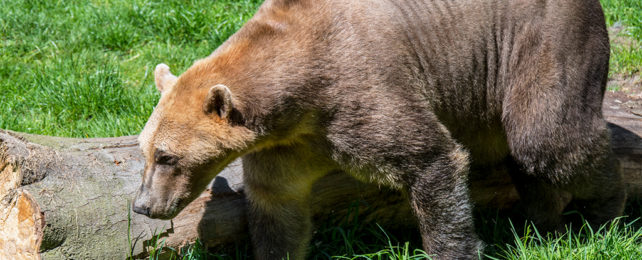Earth's largest land predators are increasingly crossing paths with brown bears at higher latitudes, bringing hybrid 'brolar bears' into the Arctic.
In 2006, a hunter in the Canadian Arctic shot a bear that didn't look like the others. DNA testing would later confirm the animal was actually part grizzly, part polar bear.
In the years since, 'pizzlies' or 'brolar bears' have popped up more and more in North America, and now researchers in Siberia are warning the same could happen elsewhere in the icy north.
"Brown bears are moving into the tundra. Brown bears have been seen in the lower reaches of the Kolyma River, where polar bears live," Innokentiy Okhlopkov, a researcher at the Siberian branch of the Russian Academy of Sciences told TASS, a Russian news agency.
"Brown bears have been seen, for example, in the Anabar District [of Yakutia, Russia]. It is likely that in the future there will be hybrids of polar and brown bears."
Polar bears and brown bears only diverged from one another around 500,000 years ago. Though uncommon, mating between the two can occasionally result in fertile offspring.
As climate change intensifies, revealing new lands and food sources, these rate events could become more common as brown bears move northwards and cross paths with polar bears more frequently. Similarly, melting sea ice forces polar bears inland, again making encounters between the two more likely.
Already, locals in some parts of Russia have noticed the two species frequenting the same places. In the Yakutia region of Siberia there are two polar bear populations that could possibly breed with brown bears.
Some studies estimate polar bears could be close to extinction by 2100, save for a few lonely subpopulations in the highest reaches of the Arctic. And if enough of them interbreed with brown bears, the pure species could disappear even sooner.
Polar bear numbers are already expected to plummet as sea ice melts, but experts are now worried that any remaining individuals will see their genetics diluted by hybridization.
In fact, that's already happening as you're reading this. In 2010, researchers in North America actually found a brolar bear whose mother was a hybrid and whose father was a brown bear.
Unlike polar bears, which mostly feed on blubber and meat, brown bears have a super varied diet. They will eat just about anything they can get their paws on, which means these are likely to better cope with any environmental changes that might come in the future.
Polar bears are not nearly so adaptable, but perhaps new genes from brown bears could help the species survive in the Arctic.
If that's the case, polar bears may still exist in the decades to come, but they'll never be quite the same as before.
One day, they could even represent an entirely new species.
